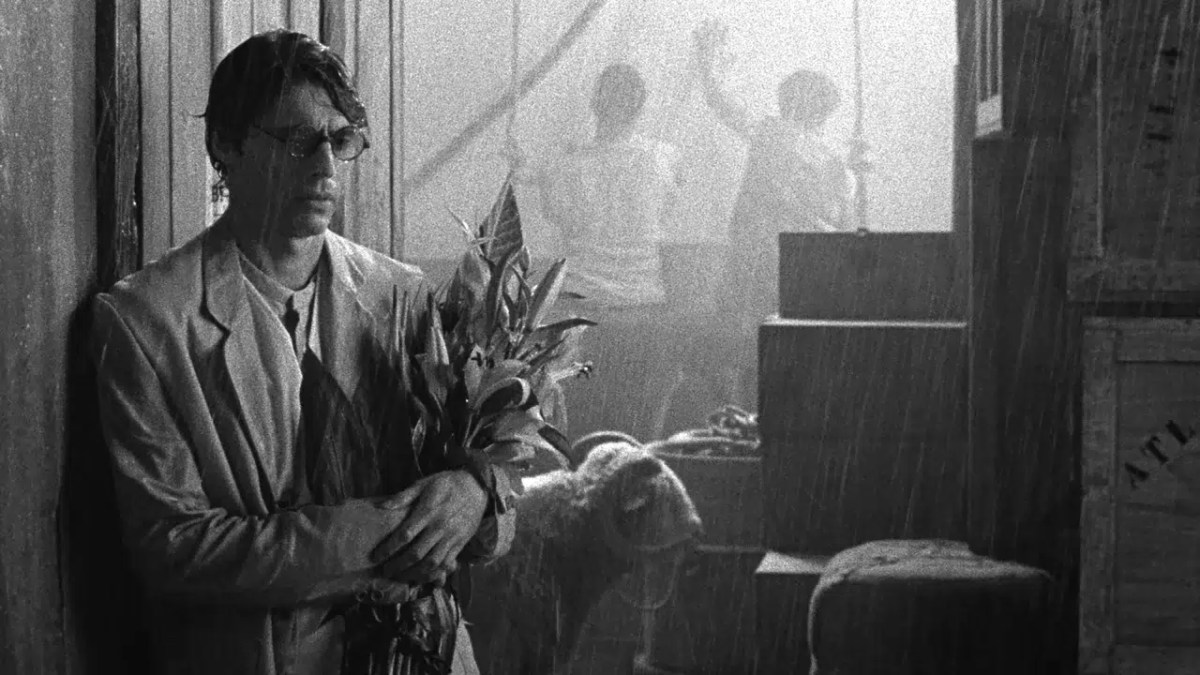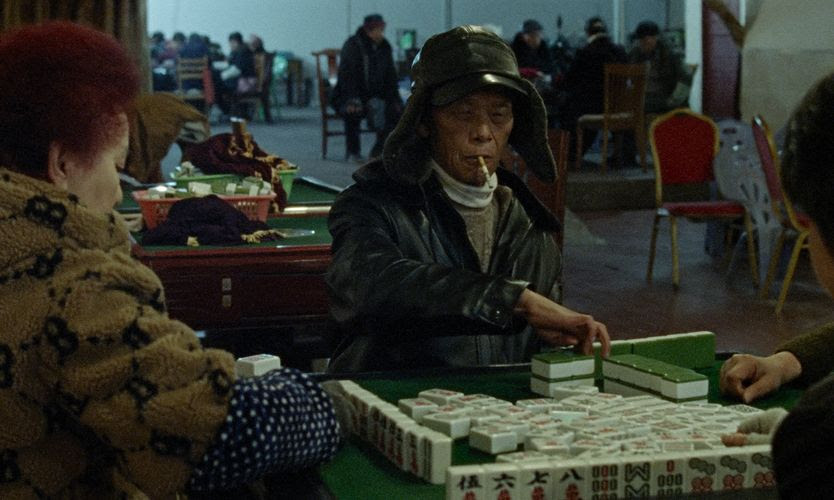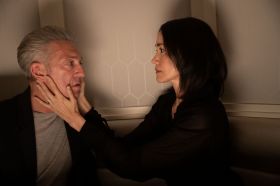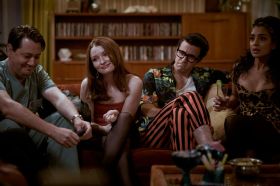Grand Tour was one of the films I most regretted missing at MIFF last year, so when Potential Films picked it up for cinematic distribution I knew I had to check it out right away. I was not disappointed.
Part early Hollywood homage, part documentary, and part experimental travelogue, Grand Tour follows Englishman Edward as he chickens out on his engagement to Molly Singleton and flees across Asia to get away from her. It’s quite unlike anything I’ve ever seen, and thus quite hard to adequately review, but I will try my best.
Starting in Myanmar (still called Burma in 1918, the time when the film is set), Edward travels by ship, train, cart and boat through Singapore, Thailand, The Philippines, Vietnam, Japan, and China: his very own Grand Tour, spurned by a cowardly decision. In the second half of the film we will see Molly attempting the same route, hot on his tail.
The film is Portugese director Miguel Gomes’ sixth feature, and it earned him a well desrved Best Director award at 2024’s Cannes Film Festival.
Watch the trailer for Grand Tour
Grand Tour takes place in a specific time – 1918 – yet it is curiously atemporal, opening with observational colour footage of a modern fairground in Myanmar before cutting to a black-and-white film sequence that introduces the lead character, Edward.
This sequence and the ones that follow are reminiscent of 1930s Hollywood, in both the screwball comedy-like acting choices and the obviously artificial arrangement of set pieces, props and lighting. In its glamorous nod to the Golden Age, one could become lulled into boredom, but then the modern footage of Bangkok, Shanghai, Osaka etc. intercuts at just the right moment, forcing you to switch on.
While the narrative sections of the film were shot on 16mm in Portugal, France Italy and Germany, the non-fiction sequences comprise of footage that Gomes captured earlier, on his research trip to East and South-East Asia Asia (before primary production began). He has described the shots as ‘fabricated found footage’, since most of them involved his prompting of non-actors and their awareness of the camera’s presence. In reviewing this footage, Gomes and his team of writers came up with much of the script for Grand Tour, which sets the fictional Edward off on a journey that precisely retraces Gomes’ own.
By approaching the filmmaking process in this curious way, Gomes was able to intersperse the fictional story of Edward with real-life footage that mimicked his story. When the narration (which, in an inspired choice, changes languages whenever Edward alights in a new country) describes a scene where he sits down for noodles in Japan, we see a modern day ramen restaurant populated by its regular clientele.
Similarly, when Molly visits a 20th-century Chinese psychic, we instead see a modern day Chinese fortune teller sitting on a plastic stool and shuffling playing cards with her long acrylic nails.
To prepare viewers for this exercise of association and imagination, we are presented with a shadow puppet play early on in Grand Tour. It’s almost as if the puppets say: everything you see is but a symbolic representation of reality – but through the power of story, anything can become real.
There is also strong commentary here on the coloniser-afforded privilege of Westerners to travel the third world at their leisure and, often, at the expense of the native population’s wellbeing. For the British Molly and Edward, their greatest concern is whether they will be married or not. The concerns, hopes, dreams and status of those they encounter and use for labour, chauffeuring, and relationship advice goes pointedly unexamined.
It doesn’t always make sense, but that’s part of its appeal – the way it carries you along like a benevolent sleep paralysis demon forces you to surrender to the beauty. Sayombhu Mukdeeprom’s incredible cinematography does a lot of the heavy lifting there, despite the film feeling a bit long towards the end.
Grand Tour is an intriguing experiment that plays with time, place, and colour. It won’t be everyone’s cup of tea – I did find my mind wandering often, though mostly to thoughts of ‘how much are flights to Myanmar right now?’ and then, immediately ‘how do I travel somewhere ethically?’.
Even if it doesn’t ignite a passion in you, it’s nonetheless worth a watch to reset the way your mind thinks about movies.
Grand Tour is in cinemas from 13 February.









